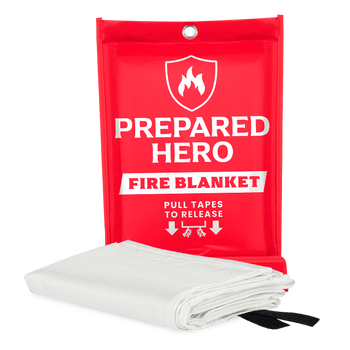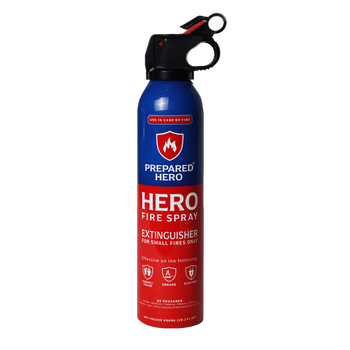New York City’s crime rates are climbing. Felony crimes hit a 15-year high, and serious assaults spiked by 18%. Violent...
Understanding fire ratings is a crucial step to fire safety. From your cozy couch to your trusty toaster, we'll explore the fire ratings of common household items so you can plan your fire exit strategy with them in mind.
What Are Fire Safety Ratings?
Fire safety ratings refer to how a product or material reacts to fire. These ratings are determined through tests. These tests measure how easily a material ignites, how long it resists fire, how it reacts to heat, and how much smoke it produces when burning.
Different materials have different standards and testing methods. For example, building materials are rated based on how long they can stand a standard fire resistance test. Furniture and mattresses, on the other hand, can be rated based on how they respond to open flame or other ignition sources.
In addition, fire safety ratings are used by manufacturers, fire safety inspectors, contractors, and other professionals to make sure that items meet safety standards and building codes. Fire safety ratings also provide consumers with crucial information about the products they buy to avoid fire hazards.
Fire Safety Ratings for the Most Common Household Items
Here are the current fire safety ratings for common household items:
1. Furniture

The California Technical Bulletin 117 (TB117) is commonly used in the United States for furniture. However, it doesn't include a rating system. Instead, it requires that materials used in furniture resist open flame for a certain period without catching fire.
2. Electronics

Fire safety ratings for electronics often focus on the material's flammability. The UL (Underwriters Laboratories) 94 is the most widely used standard for electronics.
Here are the classifications under UL 94:
- HB: The lowest rating. It indicates slow, horizontal burning.
- V-2, V-1, V-0: They indicate vertical burning, with V-0 being the best. Lower numbers mean the material stops burning quicker and doesn't drip flaming material.
- 5VB, 5VA: These are higher standards for vertical burning. The best is 5VA, which means the material stops burning within 60 seconds and doesn't drip flaming material.
3. Cables and Wires

Cables and wires are classified based on their reaction to fire. The ratings range from Class A (non-flammable) to Class F (easily flammable).
4. Clothing

Fire safety ratings for clothing are often pass or fail instead of being based on classifications. The US Flammable Fabrics Act regulates this. It requires that clothing, specifically children's sleepwear, must extinguish fire when removed from a small open flame.
5. Carpets and Rugs

Fire safety ratings are classified into Class I and Class II. Class I rugs and carpets are more fire-resistant than Class II.
6. Building Materials

Building materials are classified based on the period the material can stand a fire resistance test (e.g., one-hour, two-hour). Classes A to C are often used for roofing materials, with Class A with the highest fire resistance. If you want to know more about building materials, check out this structure fire piece we made.
Conclusion
Fire safety ratings are not just for professionals― they're crucial for everyone. These ratings reveal how everyday household items, from furniture to clothing, will react to fire.
But remember, knowledge is only the first line of defense. Having a fire safety kit with a fire spray, fire blanket, smoke mask, and fire protection gloves prepares you more. So, arm yourself with knowledge, gear up with a kit, and make fire safety a top priority.


 Fire
Fire Safety
Safety Survival
Survival Protection
Protection New
New
 Fire
Fire Safety
Safety Survival
Survival Protection
Protection New
New












